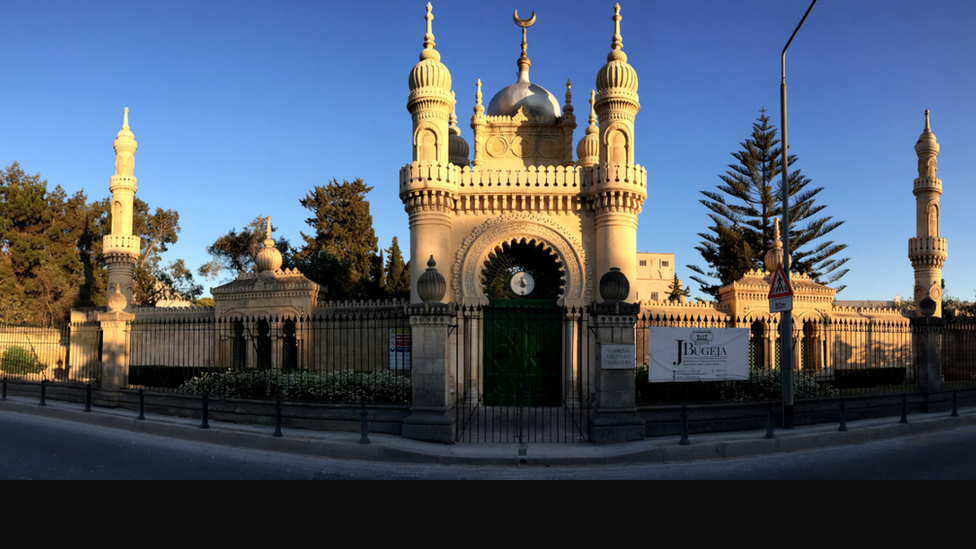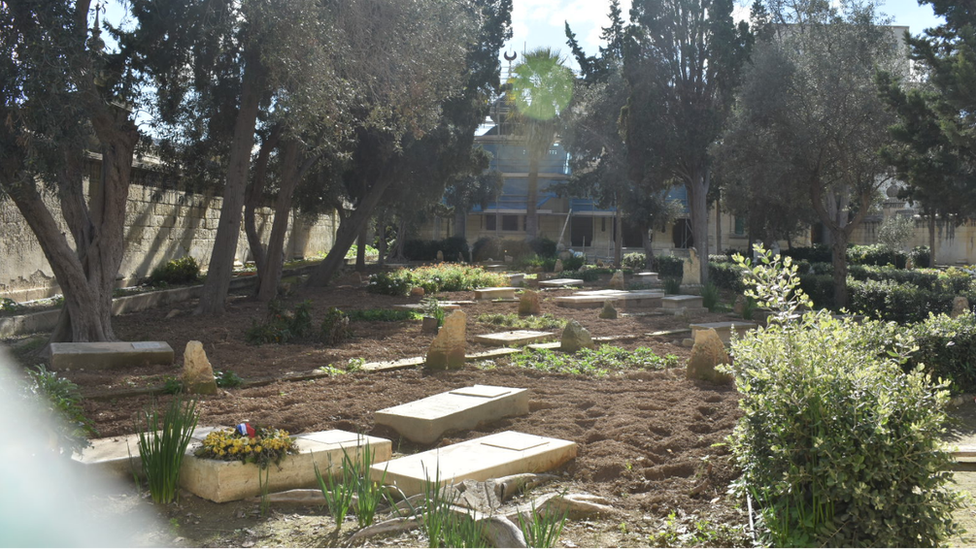Campaigners unite over Malta's Turkish cemetery
- Published

The cemetery is a Grade One protected building
Campaigners are trying to stop plans to put up garages and workshops near an important historic cemetery in Malta.
The Turkish Military Cemetery was built at the request of Sultan Abdulaziz during his visit to British-ruled Malta in 1867, and was soon dubbed the "Ottoman Taj Mahal" because of its extravagant Orientalist style.
Plans to build a development in close proximity the plans have angered Maltese and Turkish defenders of heritage alike, external, the Istanbul newspaper Sabah reports.
"It is nothing short of barbaric, external," Conrad Thake, a writer on architecture who has long campaigned to preserve the cemetery, told The Times of Malta.
He has called on the public to lodge objections with Malta's Planning Authority, complaining that the three-storey high development would "totally obliterate" the vista of the imposing edifice, which was built in 1873-74 by Emmanuele Luigi Galizia to re-inter the remains of Ottoman troops who had died during the Great Siege of Malta, external in 1565.
You may also be interested in:
"It is a sublime example of rare Orientalist architecture in Malta. Its setting and surrounding context is just as important, external," Conrad Thake posted on Facebook.
The company behind the application sought to build a filling station and car wash at the same partially-developed site in the historic Marsa district of the capital Valletta three years ago, but did not proceed with it.
There were reports that Turkey had protested on that occasion, but this time Turkish diplomacy has spoken out openly.
'Architectural gem'
"Previous incidents have demonstrated the incompatibility of industrial activity in the proximity of this historical site, external," the embassy said in a submission to the Planning Authority.
The Turkish government maintains the cemetery and is carrying out restoration work there, during which it reported damage to the rear wall by passing traffic from an industrial estate.
Maltese organisations have added their objections, most prominently the Fondazzjoni Wirt Artna (Maltese Heritage Trust), Din l-Art Helwa (National Trust of Malta) and the local Marsa Council, which warned that no development that might "negatively impact on this architectural gem, external" should be allowed.
Fondazzjoni Wirt Artna has also come up with a counter-proposal to clear the semi-derelict site of existing buildings, saying the cemetery "when originally designed was meant to stand in isolation surrounded by open country, not buildings, external".
Malta's Planning Authority is due to rule on the application by the end of November.

The Turkish government is carrying out renovation work at the cemetery
Reporting by Martin Morgan
Next story: Russian economists propose 'homebrew index'
Use #NewsfromElsewhere to stay up-to-date with our reports via Twitter, external.